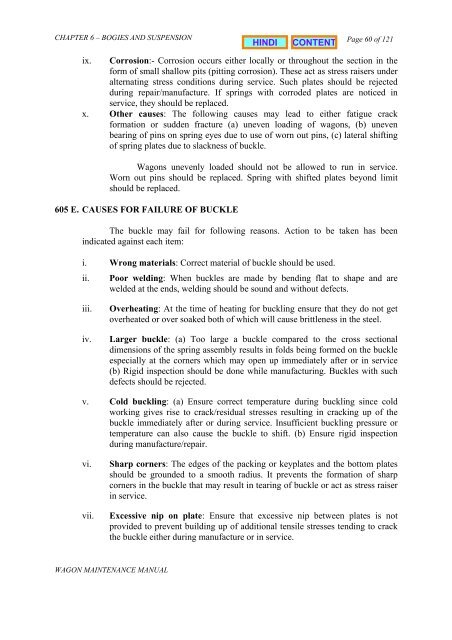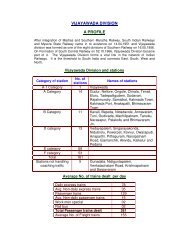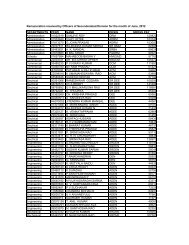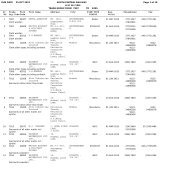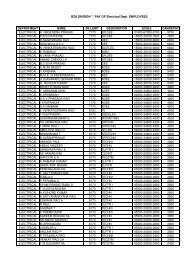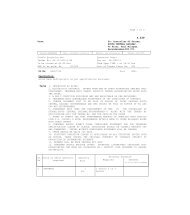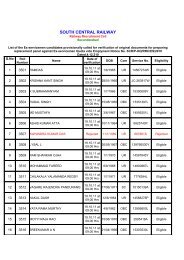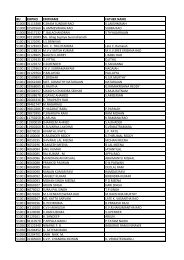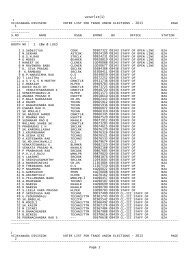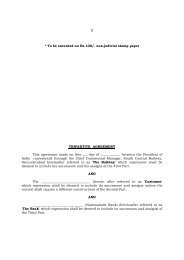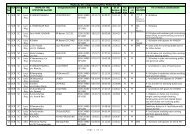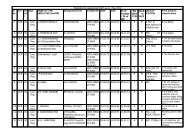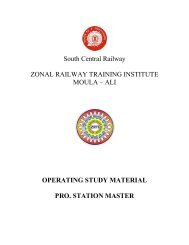BOGIES AND SUSPENSION - South Central Railway
BOGIES AND SUSPENSION - South Central Railway
BOGIES AND SUSPENSION - South Central Railway
Create successful ePaper yourself
Turn your PDF publications into a flip-book with our unique Google optimized e-Paper software.
CHAPTER 6 – <strong>BOGIES</strong> <strong>AND</strong> <strong>SUSPENSION</strong><br />
WAGON MAINTENANCE MANUAL<br />
Page 60 of 121<br />
ix. Corrosion:- Corrosion occurs either locally or throughout the section in the<br />
form of small shallow pits (pitting corrosion). These act as stress raisers under<br />
alternating stress conditions during service. Such plates should be rejected<br />
during repair/manufacture. If springs with corroded plates are noticed in<br />
service, they should be replaced.<br />
x. Other causes: The following causes may lead to either fatigue crack<br />
formation or sudden fracture (a) uneven loading of wagons, (b) uneven<br />
bearing of pins on spring eyes due to use of worn out pins, (c) lateral shifting<br />
of spring plates due to slackness of buckle.<br />
Wagons unevenly loaded should not be allowed to run in service.<br />
Worn out pins should be replaced. Spring with shifted plates beyond limit<br />
should be replaced.<br />
605 E. CAUSES FOR FAILURE OF BUCKLE<br />
The buckle may fail for following reasons. Action to be taken has been<br />
indicated against each item:<br />
i. Wrong materials: Correct material of buckle should be used.<br />
ii. Poor welding: When buckles are made by bending flat to shape and are<br />
welded at the ends, welding should be sound and without defects.<br />
iii. Overheating: At the time of heating for buckling ensure that they do not get<br />
overheated or over soaked both of which will cause brittleness in the steel.<br />
iv. Larger buckle: (a) Too large a buckle compared to the cross sectional<br />
dimensions of the spring assembly results in folds being formed on the buckle<br />
especially at the corners which may open up immediately after or in service<br />
(b) Rigid inspection should be done while manufacturing. Buckles with such<br />
defects should be rejected.<br />
v. Cold buckling: (a) Ensure correct temperature during buckling since cold<br />
working gives rise to crack/residual stresses resulting in cracking up of the<br />
buckle immediately after or during service. Insufficient buckling pressure or<br />
temperature can also cause the buckle to shift. (b) Ensure rigid inspection<br />
during manufacture/repair.<br />
vi. Sharp corners: The edges of the packing or keyplates and the bottom plates<br />
should be grounded to a smooth radius. It prevents the formation of sharp<br />
corners in the buckle that may result in tearing of buckle or act as stress raiser<br />
in service.<br />
vii. Excessive nip on plate: Ensure that excessive nip between plates is not<br />
provided to prevent building up of additional tensile stresses tending to crack<br />
the buckle either during manufacture or in service.


